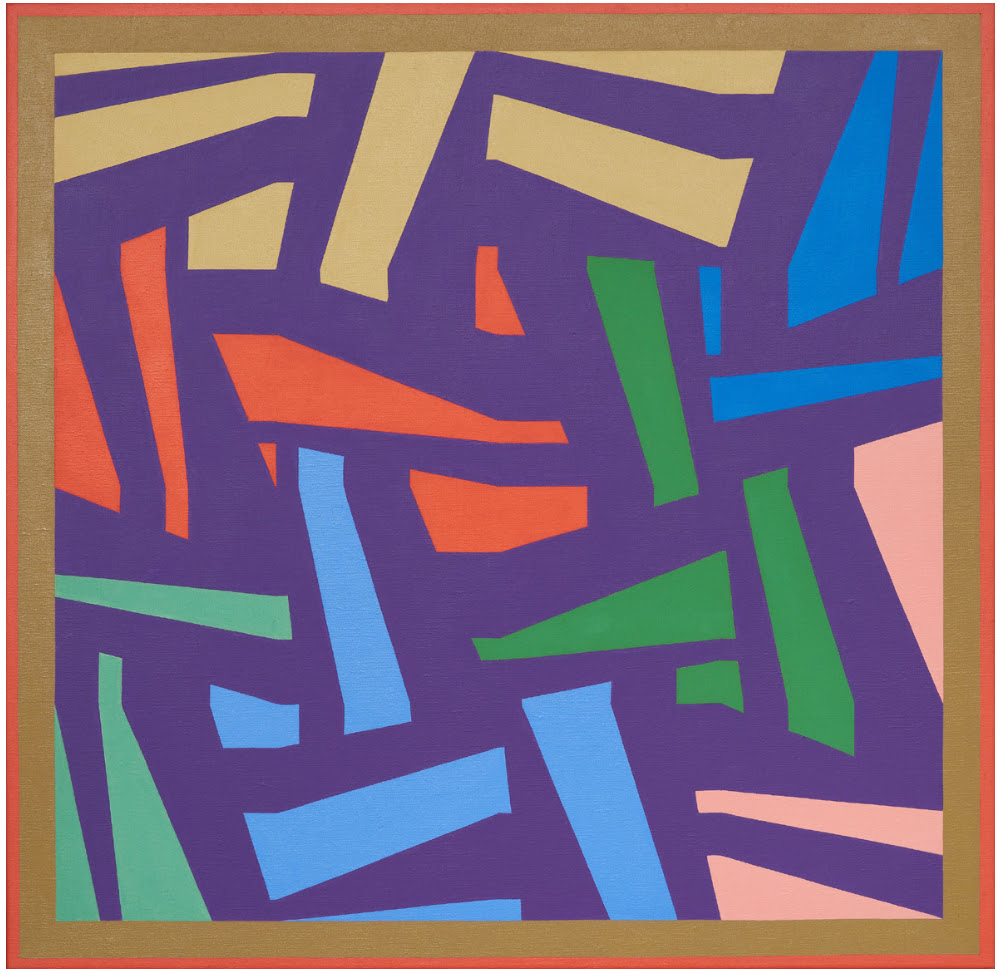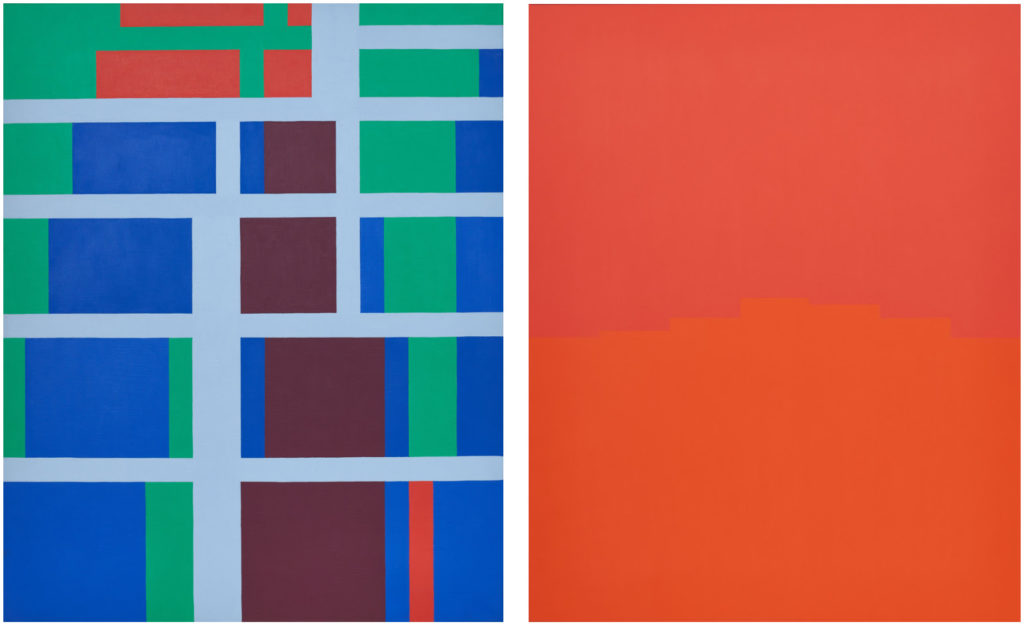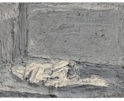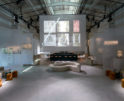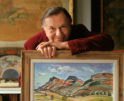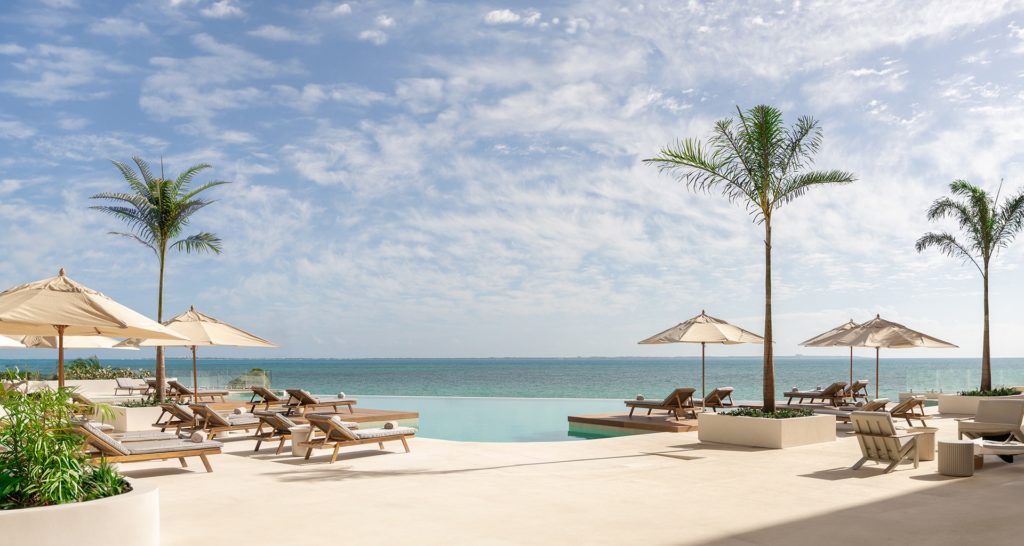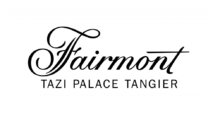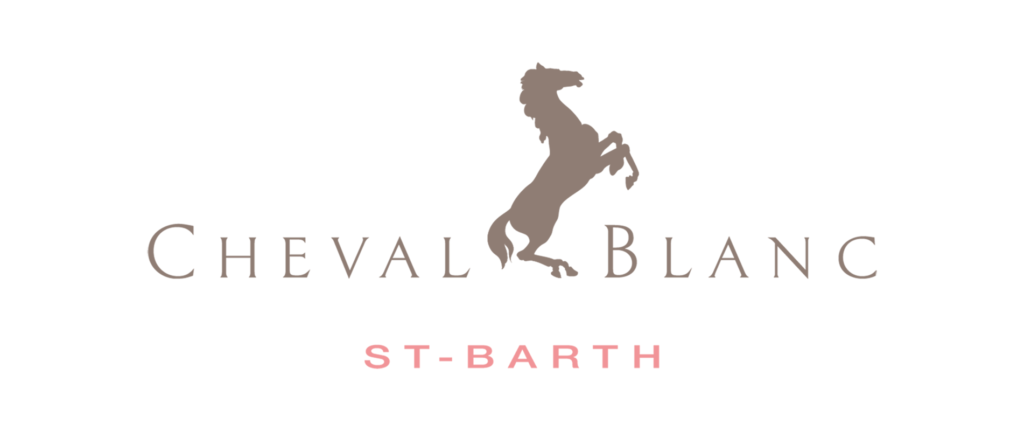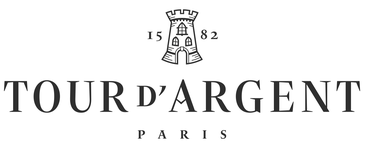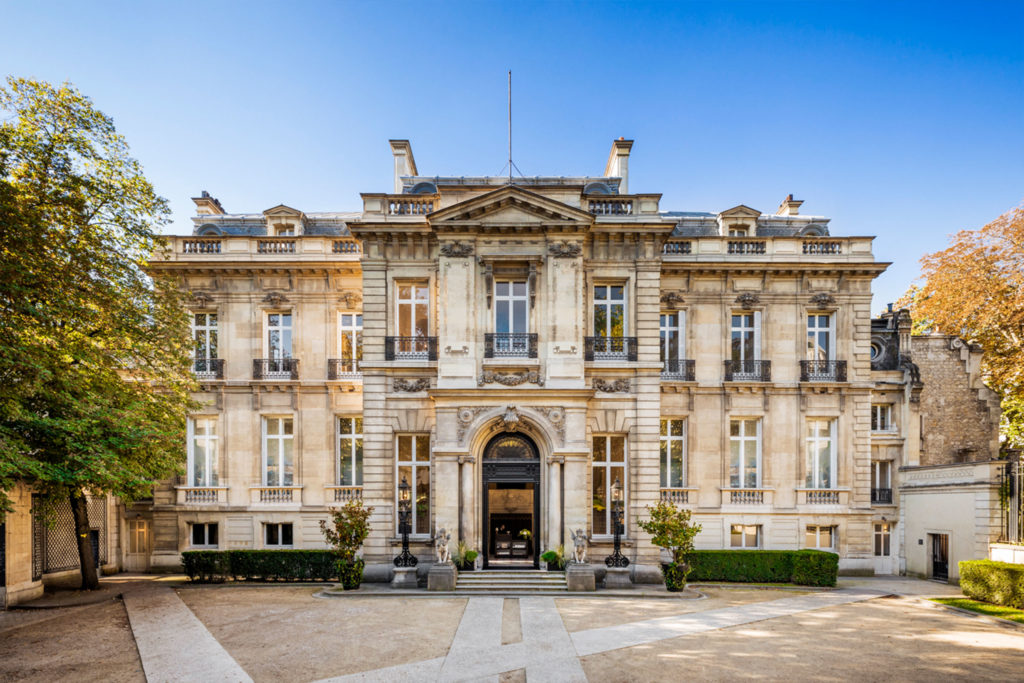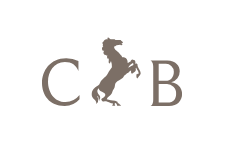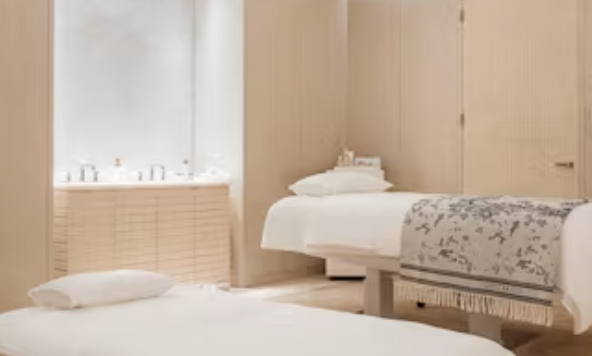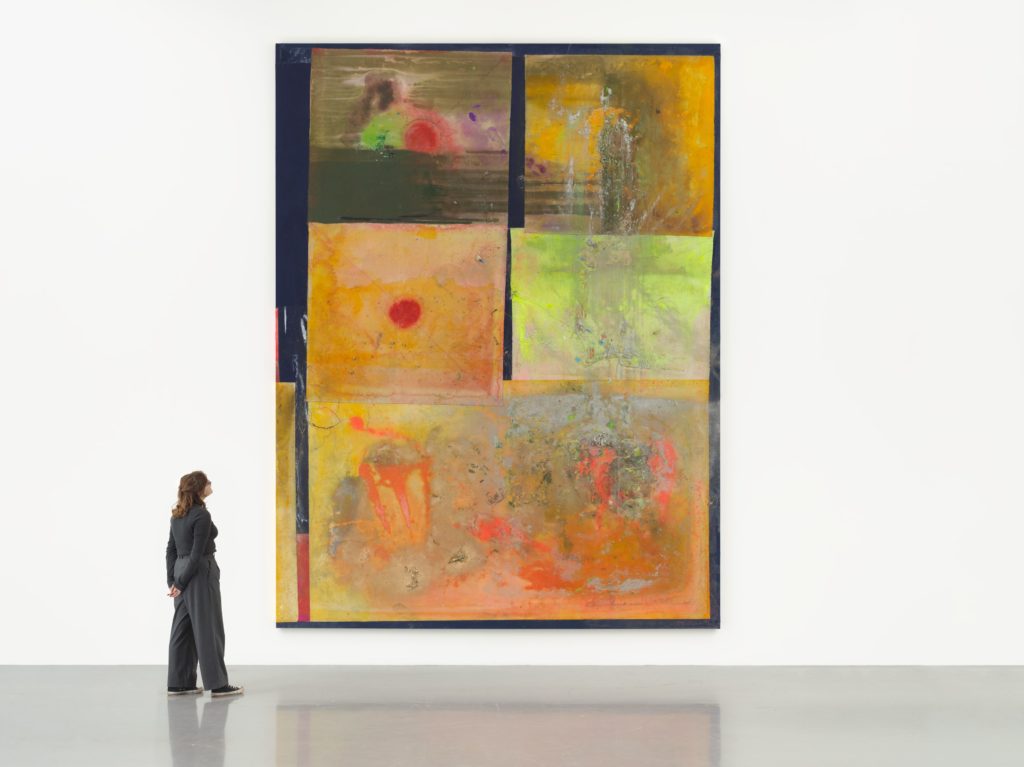
Hauser & Wirth New York – Verena Loewensberg. Kind of Blue – 21 February – 27 April 2024
HAUSER & WIRTH NEW YORK
69th Street
21 February – 27 April 2024
New York…Born in 1912, Swiss artist Verena Loewensberg was a leading figure of the influential Zurich school of concrete artists. The only female member of the group, which also included Max Bill, Camille Graeser and Richard Paul Lohse, Loewensberg distinguished herself through her oeuvre’s formal and chromatic flair. In her work, structured oil compositions are animated by wide-ranging color and shape, yielding a precise yet poetic art.
On 21 February, Hauser & Wirth will present ‘Kind of Blue’, the first solo exhibition in the United States dedicated to this singular 20th-century figure. The exhibition will be on view at the gallery’s 69th Street location through 27 April.
Curated by Henriette Coray Loewensberg, president of the Verena Loewensberg Foundation, with the support of Lionel Bovier, vice president of the Foundation and director of MAMCO in Geneva, ‘Kind of Blue’ features paintings spanning four decades of the artist’s career, as well as the only sculptural work Loewensberg ever made. In the 1960s, Loewensberg opened City-Discount, Zurich’s first jazz record store. Hauser & Wirth’s presentation, titled after Miles Davis’ seminal 1959 album, will give visitors the opportunity to discover the artist’s love of jazz, which expressed itself in her paintings through rhythm and movement.
Bovier notes, ‘In Switzerland, it’s no secret that Verena Loewensberg was one of the most interesting artists of her time. I’m thrilled that, through this exhibition, new audiences will have the opportunity to discover her singular oeuvre.’
Loewensberg belonged to a generation of international female constructivist and concrete artists, including Marlow Moss, Vera Molnar, Carmen Herrera and Sophie Warburg, whose pioneering practices have received renewed attention for their significant contributions to the development of hard edge, geometric and abstract painting in the 20th Century. The works on view in this exhibition, which date from 1944 to 1985, highlight Loewensberg’s deep engagement with contemporaneous movements such as color field, pop art, hard-edge abstraction and minimalism in their bold use of color and patterning, as well as in her technical mastery of free-hand painting.
In 1927, Loewensberg began studying weaving, embroidery, design and color theory. Like Sonia Delaunay and Sophie Taeuber-Arp, who worked in applied arts, she firmly believed in the application of geometric abstraction to everyday life, and throughout her career worked in applied arts and design. An example of one of her textile patterns is reproduced as a wallpaper on the third floor of the exhibition. Later in 1934, Loewensberg met friends Max Bill and Georges Vantongerloo, members of the abstraction-création artist group, both of whom would have a profound and lasting impact on her own work. After briefly studying at the Académie Moderne in Paris in 1935, Loewensberg ultimately abandoned her formal academic training. Back in Zurich, she started painting on paper and paperboard and in 1936 was one of the few women who took part in the groundbreaking exhibition ‘Zeitprobleme in der Schweizer Malerei und Plastik’ (Time Problems in Swiss Painting and Sculpture) at the Kunsthaus Zurich.
Working from preparatory sketches and transferring the final design to the canvas with light construction lines, Loewensberg’s liberated free-hand approach became a vehicle for self-expression. The unexpected liveliness with which she treated the motif of the grid, for instance, is apparent in a painting from 1950 on view in the exhibition: here she has created a compositional system that fragments and perturbs the grid, separating and layering rectangular blocks of color, both in primary pigments and greens and purples reminiscent of Vantongerloo’s palette. Loewensberg spread the grid out across her canvas like a composer would with sheets of music, arranging color and shape as extemporized notes that not only relate to but also define one another.
As her daughter, Henriette Coray Loewensberg, recalls, ‘When I picture my mother, I see her painting at her worktable. She was very passionate about her work, to which she devoted great discipline and constancy. Books and music nourished her creative drive. We often had visitors at home, and my mother had inspiring conversations with them, mostly about music, literature, philosophy and astronomy.’
In the ensuing decades, her work focused more on formal elements and series of works that broke from the strictures of concrete art. Moving closer to the ideas of color field, hard-edge and minimalism, many of her paintings took on an atmospheric quality, an effect that she called ‘Stimmung,’ which refers to their overall tone or mood. On view on the first floor is a series of deceptively simple two-toned paintings from the 1970s and 1980s in which she used closely related colors to render monochromatic figures from a series of overlapping squares.
In 1980, at the age of 68, Loewensberg traveled to Sicily to visit the Greek temples, a journey that led not only to the production of a new series of paintings, but also the creation, in 1982, of the only sculpture she would ever make. This untitled sculpture is comprised of five pairs of parallelepipeds constructed out of wood. With its architectural composition and symmetry evoking the formal elements of ancient Greek temples, the work is one of the very few by Loewensberg that allude to existing structures.
About the artist
Verena Loewensberg (1912 – 1986) was born and lived in Zurich, Switzerland. She received a unique and non- linear education which started at the Gewerbeschule Basel in textile, design and color theory. She left the school in 1929 and continued training with the weaver Martha Guggenbühl, while also starting dance training in Zurich with Trudi Schoop. She took various roles and commissions in the applied arts and learned to paint from a textbook she found in Ascona. Loewensberg became acquainted with artists Max Bill and Binia Bill in 1934, whom she accompanied to Paris several times between 1935 and 1936. There, she was introduced by Bill to the Paris-based abstraction-création group, meeting Georges Vantongerloo, who would have a lasting impact on her work. Loewensberg began artmaking in 1936, exhibiting her work for the first time later that same year with abstraction-création at the Kunsthaus Zurich.
Although the concretists, particularly Max Bill, were of great personal and professional importance to the artist, she attained a distinctly creative independence, stating in 1977 that, ‘Bill was not a teacher to me, he was a challenge that I had to face. It was as if I were a bird that had to learn to fly by itself.’
In the 1960s, she opened City-Discount, Zurich’s sole jazz record store, becoming one of Switzerland’s only importers of experimental jazz. It was around this time that her work, always animated by her independent spirit, truly defied categorization.
Pulling from her interdisciplinary education, Loewensberg’s work reopened the book on the aesthetics of concrete art, connecting it to the contemporary in surprising and often revelatory ways. Each of Loewensberg’s works is untitled, mirroring her relative silence on her work and private life. She produced no theoretical writings, and her preparatory sketches never reached the eye of the public. This reticence was perhaps intended to avoid the essentialization of her work, particularly by a global and local art world that systematically marginalized female artists. By largely abstracting her artistic intentions and her personal life, Loewensberg invited free interpretation of her art and its capacities.
In 1981, five years before her death, she became the first woman celebrated with a retrospective at the Kunsthaus Zurich. Subsequent exhibitions of Loewensberg’s work have taken place at the Aargauer Kunsthaus, Aarau (1992), Haus Konstruktiv, Zürich (1998 and 2006) and Kunst Museum Winterthur (2012). In 2022, MAMCO (Musée d’art moderne et contemporain) in Geneva also held a major retrospective.
Caption and courtesy information:
All images:
© 2024, Verena Loewensberg Stiftung, Zürich
Verena Loewensberg Untitled
1972
Oil on canvas
110 x 110 cm / 43 1/4 x 43 1/4 in Photo: Jon Etter
Verena Loewensberg Untitled
1950
Oil on canvas
78 x 63 cm / 30 3/4 x 24 3/4 in Photo: Jon Etter
Verena Loewensberg Untitled
1985
Oil on canvas
140 x 106 cm / 55 1/8 x 41 3/4 in Photo: Jon Etter
Verena Loewensberg Untitled
1957
Oil on canvas
67 x 67 cm / 26 3/8 x 26 3/8 in Photo: Jon Etter
Verena Loewensberg in her apartment at Florastrasse 55 in Zürich, c. 1970
Photo: Thomas Cugini, Zürich
Recommended
-
Frank Auerbach’s Masterpiece Poised to Make Waves at Christie’s – A Historic Sale in the MakingFebruary 21st, 2025
-
Prada Mode Abu Dhabi: Where Art, Sound, and Culture Converge in a Visionary OasisFebruary 19th, 2025
-
Step Into a Surreal Dream: Paul Delvaux’s Masterpieces Headline Christie’s March AuctionFebruary 4th, 2025

